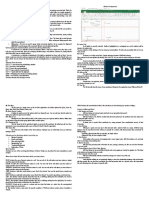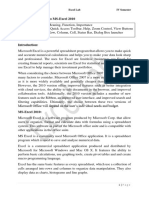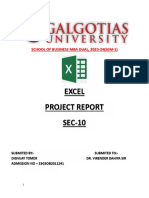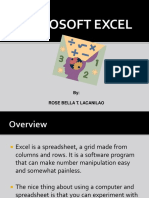0% found this document useful (0 votes)
14 views2 pagesBasic Excel Uses and Functions
Microsoft Excel is a spreadsheet software used for data organization, analysis, and visualization. Key features include worksheets, formatting options, sorting and filtering capabilities, and the ability to create charts. Basic functions like SUM, AVERAGE, and VLOOKUP, along with useful shortcuts, enhance user efficiency in managing data.
Uploaded by
hameshachaterguneCopyright
© © All Rights Reserved
We take content rights seriously. If you suspect this is your content, claim it here.
Available Formats
Download as PDF, TXT or read online on Scribd
0% found this document useful (0 votes)
14 views2 pagesBasic Excel Uses and Functions
Microsoft Excel is a spreadsheet software used for data organization, analysis, and visualization. Key features include worksheets, formatting options, sorting and filtering capabilities, and the ability to create charts. Basic functions like SUM, AVERAGE, and VLOOKUP, along with useful shortcuts, enhance user efficiency in managing data.
Uploaded by
hameshachaterguneCopyright
© © All Rights Reserved
We take content rights seriously. If you suspect this is your content, claim it here.
Available Formats
Download as PDF, TXT or read online on Scribd
/ 2























































































